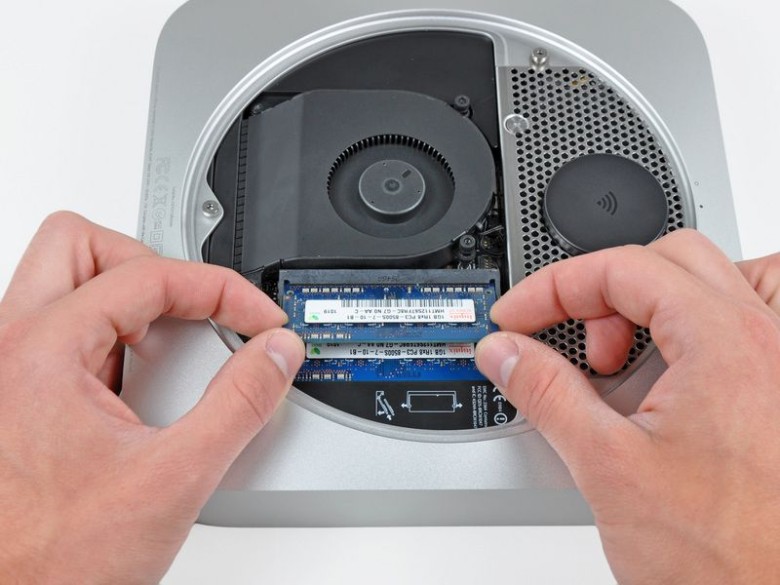

It is connected in the back of the power pack, farthest from where you have the device placed. But looking at the price of a properly spec'ed out Mini, you might as well just get an iMac because once you add in the price of a monitor, there's not much difference but at least you get a device that's a little more upgradeable.There is a piece of plastic that guides around the power pack, the logic board, and the hard drive. Stucki gives the new device an overall thumbs up, citing the new CPU and graphics. If you want an SSD, you better order it when you buy the Mini because self-service upgrades are just not in the cards with this device. Most likely because of heat, Apple is only using 5,400 RPM drives rather than 7,200 RPM drives. Stucki also pointed out that the Mac Mini comes with tamper-proof screws, so doing your own hard drive replacement won't be easy. I don't know where this mentality of shutting people out comes from, but Apple needs to start treating its users like they have the brains to pop a DIMM stick in a socket. Now Apple has made it impossible to replace two of the more likely components to fail. This isn't just an upgrade issue, it's a replacement issue. And you know what? They will just keep getting away with this because I doubt anyone of prominence in the tech press will call them out. I've taken Apple to task over the excessive price it charges for memory, as have other ITworld writers. So once again, you are paying two to three times more for the Apple product than if you bought the memory yourself.

Now compare that to a single 4GB DDR3 DRAM stick, which is about $35 on NewEgg, or $70 for a full 8GB, and an average price of about $150 for 16GB of memory. The faster and more expensive Minis have the same price differential for memory. An 8GB version is $100 more and a 16GB machine is $300. The $499 device, which is pretty underpowered running at 1.4GHz, comes with 4GB of RAM. If you want more RAM, you better select it at the time of purchase and hope it doesn't go bad.Īpple seems to view the memory as a profit driver. Brian Stucki on the macminicolo blog took a close look at the new Mini and found Apple had soldered the RAM modules in place.


 0 kommentar(er)
0 kommentar(er)
